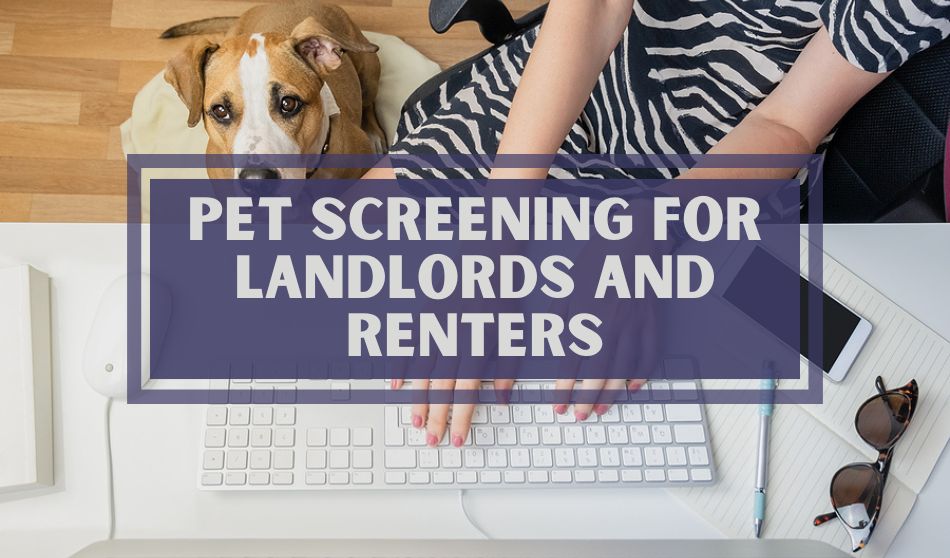
Pet screening is becoming increasingly common for pet-friendly rental properties and with the right screening tools, there are benefits for landlords and renters alike. With similar benefits to general tenant screening, pet screening can help mitigate damage to a rental property and ensure safety for all other pets and tenants living there, all while allowing renters to live with their beloved furry friends. Renters and landlords alike should understand pet screening best practices and how to navigate ESA or service animals within the screening process.
Allowing pets into your rental properties can be a smart idea. Getting ahead of the curve by creating a durable space for pets and engaging in a comprehensive tenant screening process can ensure that you are mitigating tenant damage before it occurs.
With up to 72% of renters owning pets, your rental property may house pets, which means that creating a structured pet policy and requiring pet screening services to be utilized can help ensure additional safety for your tenants and their pets while protecting your property. Understanding pet screening is key to protecting your ROI when offering pet-friendly rentals, and pet screening services can offer additional protection and assistance when navigating documentation for ESA or service animals.
Understanding General Tenant Screening Practices:
If you are a renter, landlord or property manager, you likely understand the concept of tenant screening. Tenant screening is an unbiased criteria designed to check for a history of financial responsibility and an absence of a history of rule-breaking activity (such as behavior that might have resulted in an eviction in the past).
These tenant screening checks allow landlords to reasonably vet potential tenants for reliability without relying on unintentional bias or illegal means when choosing the best possible renter for the property. Reliable tenant screening benefits landlords–who must protect their property from damage or lost income–and tenants who need access to housing without being subjected to application methods that may discriminate against any legally protected class.
What is Pet Screening?
Pet screening offers a reliable and consistent way to navigate screening and accepting pets at a pet-friendly rental, offering similar benefits to general tenant screening.
Landlords and property managers can create written pet criteria that will allow them to seamlessly evaluate a prospective animal without going through the headache of arbitrarily attempting to decide if a pet may cause issues. Creating a systematic screening process as a landlord can involve requiring tenants to offer pet resumes and landlords and managers may request specific information within those resumes.
Recommendations include:
- Pet type and breed
- Pet age
- Pet size and weight
- Vaccination history
Learn more: How to Write a Pet Resume For Your Rental Application
The above information, along with a pet resume can allow potential renters to put their pet’s best paw forward, and can inform landlords of vital information. Since pets can pose a liability, landlords may find have specific breed or size restrictions in place that will need to be addressed before an applicant and their pet moves in. Whether you are a landlord or a renter, remember that there is a lot to understand about pet breeds and potential breed restrictions in relation to liability and insurance.
Learn more: What Every Landlord Should Know About Pet Breeds
Pet Screening for Animal Behavior:
In the standard tenant screening process, landlords and property managers generally run a background check and credit check to formally and reliably assess previous behavior. While you landlords can ask questions regarding the pet’s history, and think about requesting a pet resume, relying solely on a pet owner’s recommendation can be a difficult way to assess animal behavior. Formal pet screening services solve this problem.
Pet Screening Services Can Be Integrated in the Traditional Rental Application Process
Landlords and property managers who already use software to streamline the rental application process, may find that their favorite property management software solution has the ability to include pet screening services seamlessly.
A good pet screening option for landlords and tenants alike will integrate with programs and software solutions they already use day-to-day. Landlords and property managers who utilize property management software with a tenant portal for communication with tenants will find a good deal of benefits from a service that will integrate with their existing software.
What is the Best Pet Screening Option?
Rentec Direct property management software integrates and has a relationship with a leading pet screening provider, PetScreening™. Their services allow landlords and property managers to outsource an applicant’s pet risk assessment, ensuring a fair and efficient application process for future tenants and tenants’ furry friends.
Learn more: Protect Pet-Friendly Rentals With Petscreening And Rentec Direct
Services like PetScreening™ will handle all the screening and verification work for landlords, and provide tenants with an easy way to show a record of good pet behavior when they are ready to move to a new rental.
For clients of Rentec Direct property management software, PetScreening™ is an excellent option that offers a third-party verification of all documentation for ESA and assistance animals, ensuring that it is reliable, credible, and meets the test of reasonableness.
Additionally, they offer general pet screening, which allows applicants (renters) to enter important information about their pet(s), including their general care and understanding of pet policies into the database. PetScreening reviews factors to assess housing-related risk; these factors can include community-specific restrictions such as including breed, weight, age and vaccination records or pet behaviors. All of these factors are used to create a FIDO Score™ and the process is free for landlords and property managers.
Learn more: Protect Pet-Friendly Rentals With Petscreening™ And Rentec Direct
How to Screen ESA and Assistance Animals
Screening for ESA (emotional support animals) and assistance animals should be done carefully to ensure that the process is done in a legal and effective manner. Getting the proper validation for assistance animal accommodation requests is key for landlords and property managers, but managers and landlords may be hesitant to ask for any third-party verification documentation out of fear of violating Fair Housing laws and HUD guidelines.
Learn more: Ultimate Guide for Landlords and Service Animals
Fraudulent ESA or assistance animal claims undermine those with a legitimate need for service or assistance animals and can put tenants or other assistance animals at risk. While most accommodation requests are legitimate, a study shows that 18% of reasonable accommodation requests have insufficient documentation, unresponsive third-party verification, or are simply fraudulent. Some screening services will take care of this process for landlords and property managers, allowing them to uphold the integrity of the accommodation request review process and ensuring that needs are met for any tenants who legally deserve and need accommodation.






Thanks for sharing insightful article about pet screening for rentals, and offering evaluation strategies for a harmonious pet-friendly living environment.